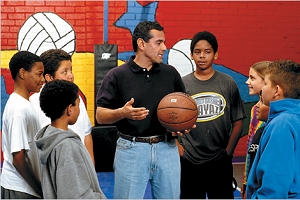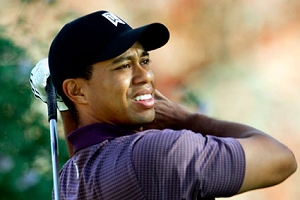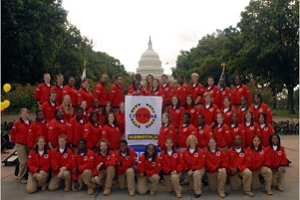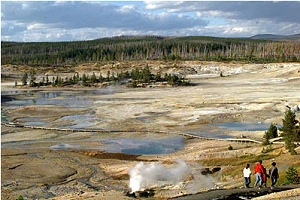America in context
American Life, Diversity Explained, Point by Data Point

America is changing in big ways. It's getting older, and it's getting more racially and ethnically diverse. The median age of the U.S. population is roughly 38 years old, up from 30 in 1980, and will continue to inch up as the large "baby boom generation" reaches retirement age.
The total population grew by roughly 6 percent from 2000 to 2006, to reach 300 million. But the non-Hispanic white population grew at a much slower rate (1.6 percent) during the same period while Hispanics grew by 26 percent, Asians by 24 percent and blacks by 7 percent.
These and other statistics were released December 20 by the U.S. Census Bureau in its annual Statistical Abstract of the United States, a compendium of data on American life that includes everything from how much Americans volunteer (27 percent of the population volunteers an hour per week) to how much they pay for a gallon of unleaded gasoline ($2.59) to which U.S. cities are most popular with travelers from abroad (New York wins by far).
The book’s data -- 1,366 tables from government and private sources -- show that U.S. households spend far less of their budgets on food than households in most other countries. America also happens to have the largest share of fat people of any country -- nearly a third of American adults are obese.
Americans consume less tobacco than Japanese or Europeans. Compared to citizens of other countries, Americans pay a small percent of wages in taxes and are more likely to own their homes, but Americans’ cell phone usage pales in comparison to that of many European and Asian countries.
PROOF OF GROWING DIVERSITY
There are 36 million foreign-born in the United States, the majority from Central American countries, followed by a large group from Asia. Roughly one-fifth of children in elementary and secondary schools have a foreign-born parent. An equal share speaks a language other than English at home.
The Abstract shows the effect of such diversity on politics. The number of Hispanics elected to public office has risen from roughly 3,000 in 1985 to 5,000 today.
These Hispanic officials represent 1 percent of the half million elected officials in the United States, according to Arturo Vargas of the National Association of Latino Elected Officials, a share he expects to rise quickly. He said that, today, California and Texas, which have political districts where Latinos are the majority, account for more than half of Hispanic officeholders.
“The Voting Rights Act has worked,” said Vargas, referring to the 1965 law to increase the voter registration of minorities. “Latino-majority areas are represented by Latinos.”
Vargas said he expects to see more “crossover candidates” who can win in non-Hispanic districts. Antonio Villaraigosa, the Hispanic mayor of Los Angeles won in a city that is half Hispanic but in which only one-fourth of voters are Hispanic. There are three Hispanic U.S. senators, who hail from both political parties -- Robert Menendez, a Democrat from New Jersey; Mel Martinez, a Republican from Florida; and Ken Salazar, a Democrat from Colorado. They won in states where Hispanic voters are not numerous enough to determine the outcome of an election.
NEW YORK CITY’S GLOBAL APPEAL
The Abstract also includes several tables of data regarding recreation and tourism, one of which shows that New York City remains the top U.S. destination city for overseas travelers. It is the only city among the top 10 destinations that has surpassed its international visitor numbers from the year 2000 -- the year before terrorist attacks on U.S. targets.
“After [September 11, 2001], we saw some patriotic tourism, where New York City, being the world’s ‘second home,’ saw an increase in tourists from around the world -- people wanting to support the city,” said Christopher Heywood, spokesman for NYC and Company, the city’s tourism organization. “There’s a global appeal about the city,” he said.
In 2007, New York City launched an overseas ad campaign, which particularly targets potential visitors from the United Kingdom, Ireland and Spain. “The international visitor stays longer and spends more money,” said Heywood. “They represent 17 percent of the city’s visitor volume but more than half of visitor spending.”
Every edition of the Statistical Abstract, dating from 1878, is available on the Census Bureau’s Web site.
By Elizabeth Kelleher
USINFO Staff Writer
Recently on America in context
Minority Groups Now One-Third of U.S. Population
 The United States Census Bureau announced in 2006 that as many as one-third of U.S. residents now claim "minority" heritage, reflecting the continuing evolution of an American national identity that transcends ethnic and religious boundaries.
The United States Census Bureau announced in 2006 that as many as one-third of U.S. residents now claim "minority" heritage, reflecting the continuing evolution of an American national identity that transcends ethnic and religious boundaries.
Volunteerism Is Integral Part of U.S. Culture
 University students represent a large and growing source of the nation's volunteers, according to the Corporation for National and Community Service, an independent federal agency that provides grants and other support to volunteer organizations throughout the country.
University students represent a large and growing source of the nation's volunteers, according to the Corporation for National and Community Service, an independent federal agency that provides grants and other support to volunteer organizations throughout the country.
Sharing Our National Park System With the World
 The United States launched a conservation ethic with establishment of Yellowstone National Park in 1872 and today manages some 34 million hectares in parks and 36.4 million hectares in wildlife refuges. The country is committed to helping other countries share in the conservation and economic benefits of land and wildlife preservation.
The United States launched a conservation ethic with establishment of Yellowstone National Park in 1872 and today manages some 34 million hectares in parks and 36.4 million hectares in wildlife refuges. The country is committed to helping other countries share in the conservation and economic benefits of land and wildlife preservation.